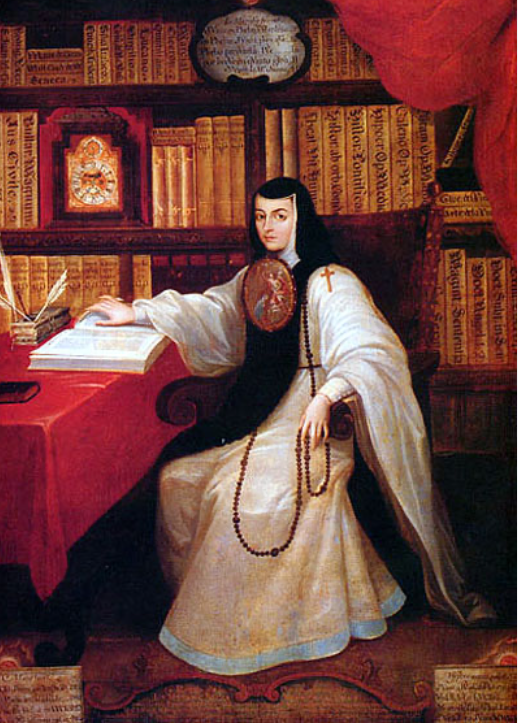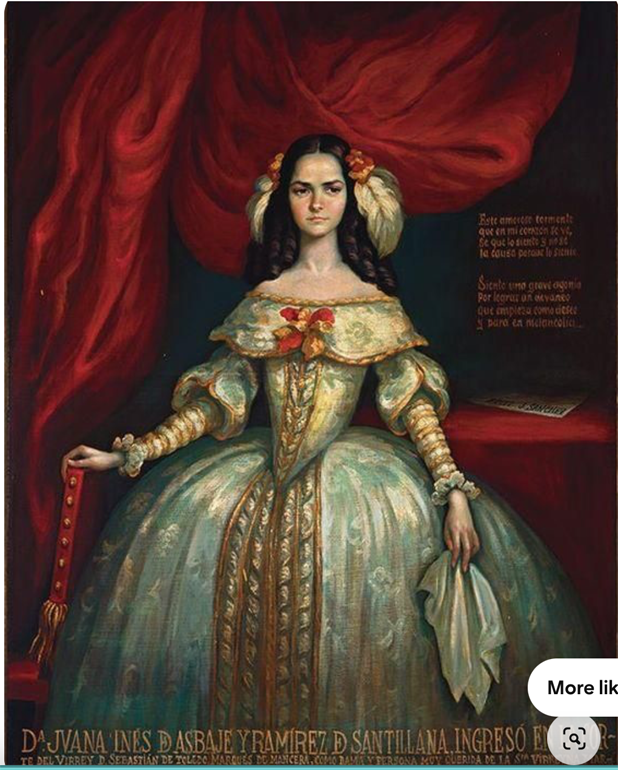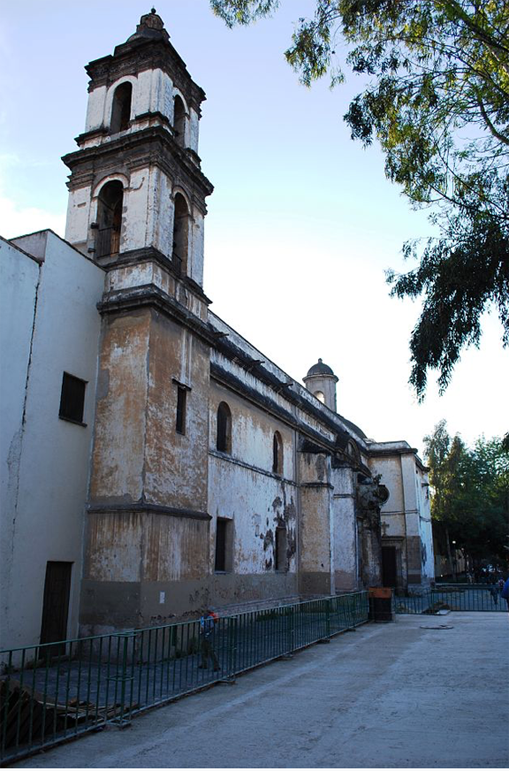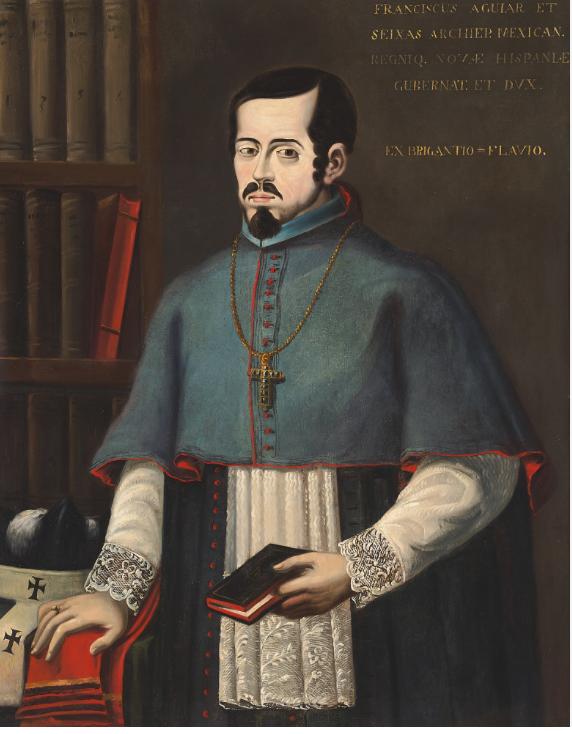
Sor Juana, portrait by Miguel Cabrera
*
Español
April 7, 2024
by Philip Gambone
She was called the Fénix de México, the Décima Musa, the Minerva of América—" of all illustrious women the exemplar!" In the second half of the 17th century, Sor Juana Inés de la Cruz, a Mexican nun by profession but a poet in her soul, "stood alone, surrounded by a chorus of undistinctive voices," writes Octavio Paz in his magisterial biography, Sor Juana or, The Traps of Faith. "Few poets in our language rival her," Paz says,"and those who surpass her can be counted on the fingers of one hand."

Sor Juana by Octavio Paz
*
Born in 1648, a "daughter of the Church" (a euphemism for an illegitimate child), Juana grew up on her grandfather's hacienda in Nepantla. As a young girl she displayed a curious, playful, clever personality, with a "desire for learning [that] was stronger than the desire for eating." So great were her intellectual ambitions that, when still a child, she proposed to her mother that she disguise herself as a man in order to attend university, a scheme that was summarily dismissed.
Upon her grandfather's death in 1656, Juana went to Mexico City to live with wealthy relations, who soon presented her to the newly arrived Vicereine, María Luisa Manrique de Lara y Gonzaga, the Countess de Paredes. The two women, who shared a mutual love for literature and learning, quickly took to each other. "The lady Vicereine could not live an instant without Juana Inés," reported her first biographer, the Jesuit Diego de Calleja.

María Luisa Manrique de Lara y Gonzaga
*
Paz—"a man of dazzling talent," Michael Harrington once wrote of him—does a magnificent job of giving us not only Sor Juana's life but also a substantial glimpse into the colonial culture in which she lived. He takes us into the world of the viceregal court with its many parties and palace flirtations, called galanteos de palacio. Juana Inés "moved nimbly among the palace whirlwinds," he writes, "and soon became one of their centers." She was renowned for her wit, her learning, and her beauty. By the time she was 18, she was already displaying a mastery of poetic form.
Then suddenly, at age 19, she entered a convent. Months later, frightened by the harshness of the order, she returned to the secular world. But after a year and a half, she joined another order, one known for the mildness of its discipline, housed in the convent of San Jerónimo.

Convento de San Jerónimo, Ciudad de México
*
Paz speculates on Sor Juana's reasons for entering the convent. Because she was illegitimate, poor, and had been abandoned by her father, her prospects for a good marriage were slim. Her choice to become a nun was not, he says, "a ladder to God but a refuge for a woman who found herself alone in the world." Moreover, life in a convent gave her the opportunity to pursue her great love of learning and her desire to write. "It is difficult to define exactly what kind of knowledge she sought," Paz says, "It certainly was not union with God."

Octavio Paz
*
Like the convent that became San Miguel's Bellas Artes, San Jerónimo was a large building constructed around a courtyard. Sor Juana's official duties included serving as the convent's archivist and bookkeeper, roles in which she distinguished herself. Overall, the rule at the convent was relaxed and the physical amenities—she lived in an elegantly furnished apartment—pleasant enough to give her plenty of time for reading, study, and writing. She was attended by servants including a mulatto slave girl, a present from her mother when she became a nun.
Sor Juana loved music and, over time, put together an impressive collection of musical instruments. She also amassed a large library of both ancient and contemporary writers and a collection of scientific and mathematical instruments. "The collection and her library were her family," says Paz. In effect, she turned the convent into a salon.
Despite her serious intellectual and artistic pursuits, Juana had to endure the small, shallow world of convent life, a world of interruptions, chatter, gossip, and quarrels—a world, says Paz, "possessed by a fever for the trivial." Her response was to retreat into "the solitary adventure of the mind." Indeed, even the world of Mexico was too small for her. Sor Juana's true contemporaries were in Europe, with whom she maintained a voluminous correspondence. Sadly, her letters have been lost.
Among all her activities, it was in poetry that Sor Juana displayed her greatest passions and talents. Her poems, Paz says, were the "children of her soul." In the words of the title page of her first book of poems, Inundación Castalida (published in Madrid in 1689), her poems were elegantes, sutiles, claros, ingeniosos y útiles. And, on many occasions, highly erotic."It is not," Paz contends, "possible to extract any conclusions about her personal erotic tendencies from an examination of her poems." Nevertheless, he finds in some of her poems "the disquieting presence of the erotic ghost."
While we may never know what Sor Juana's true sexual feelings were, nevertheless Paz acknowledges that her "unused libido" was directed to María Luisa, the Vicereine. The many poems she addressed to her often contain an "element of indiscretion." The eroticization of friendship was a well-established convention in baroque poetry, but in Sor Juana's case, she carried this to "the most daring and delirious extremes." Indeed, when her poems were first published, an anonymous explanatory note was attached to one of the poems dedicated to the Countess, assuring the reader that the poetess was expressing "a love utterly pure and ardent."
Sor Juana's consummate artistry did not insulate her from the envy, fear, misogyny, jealousy, and mistrust of many of her contemporaries. Her sex and her intellectual superiority "were a double affront" to the Church prelates, Paz writes. The archconservative archbishop of Mexico, Francisco de Aguiar y Seijas, continually rebuked and reprimanded her. "Consumed by a sick hatred of women, he saw in Sor Juana an example of perdition and dissoluteness."

Francisico de Aguiar y Seijas
*
In a pamphlet published in 1690, a fellow nun, Sor Filotea, addressed the Church's concerns over Sor Juana's lax attention to her religious calling: "You have spent much time in the study of philosophers and poets; now it would be well for you to better your occupation and improve the quality of the books…. Any science that does not light the way to salvation God regards as foolishness."
In her Response—the Respuesta a Sor Filotea— Sor Juana defended herself, arguing that women, too, could be educated and pursue worldly intellectual activities. The Respuesta was, says Margaret Sayers Peden, the translator of Paz's biography and of some of Sor Juana's poems, "the first document in our hemisphere to defend a woman's right to teach, to study, and to write."

Margaret Sayers Peden
*
Despite her brilliant self-defense, Sor Juana was required to submit to an exhaustive general confession of her "sins," which included the writing of most of her works, her love of secular learning, and her "worldly friendships"—in short, to the sin of having lived as "a pagan might live." In March, 1694, she signed—in blood!—a profession of her faith, "abandoning humane studies in order … to follow the Road to Perfection." Her books and musical instruments were sold."If she had been a man," Paz says,"the zealous Princes of the Church would not have persecuted her."
The next year, on April 17, Sor Juana died. She had been attending—"without rest and without fear of their proximity," says Calleja—to her sisters, who were dying of an extremely contagious epidemic that had broken out. She was buried at the convent. "She never renounced reason," Paz writes, "although at the end of her life she was forced to renounce literature."
Paz's biography is a masterpiece of exhaustive (and occasionally exhausting!) scholarship, of measured and reasonable argumentation, and of elegant prose, elegantly translated into English by Peden. Conversant with the entire tradition of the canon of Western poetry, Paz—himself a Mexican poet won the Nobel Prize in 1971—was the perfect writer to tackle Sor Juana's life, her poetry, and her times. His biography is not light reading, but it is always fascinating. Fellow Mexican writer Carlos Fuentes called Paz's Sor Juana "an intellectual landmark." It's also a great read about one of the towering figures in Mexico's early colonial history and by one of the towering figures in world poetry.
**************

Philip Gambone, a retired high school English teacher, also taught creative and expository writing at Harvard for twenty-eight years. He is the author of five books, most recently As Far As I Can Tell: Finding My Father in World War II, which was named one of the Best Books of 2020 by the Boston Globe. It is available through Amazon, at the Biblioteca bookshop, and at Aurora Books off the Calzada de la Aurora.
**************
*****
Please contribute to Lokkal,
SMA's online collective:
 ***
***
Discover Lokkal:
Watch the two-minute video below.
Then, just below that, scroll down SMA's Community Wall.
Mission

Visit SMA's Social Network
Contact / Contactar

